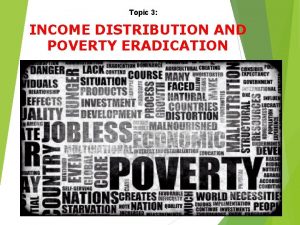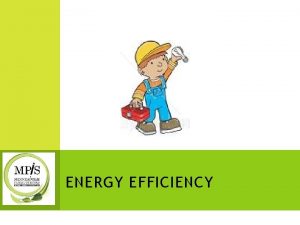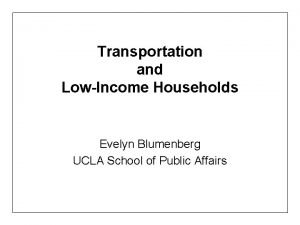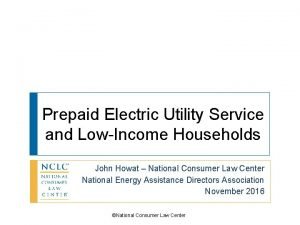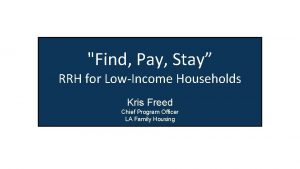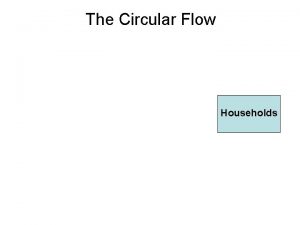Workshop Energy efficiency for lowincome households Energy poverty







- Slides: 7

Workshop: Energy efficiency for low-income households

Energy poverty in Europe What the EU should deliver now Michaela Kauer Director of the Brussels Liaison Office of the City of Vienna Coordinator of the Urban Agenda for the EU Housing Partnership

The many faces of energy poverty • 50 -125 million EU citizens can not afford heating • Nearly 11% of the European population are energy-poor and do not have access to energy-efficient technologies • Most affected are low income groups of the population • With a 16 percent income and a 40 percent pension gap between women and men, energy poverty has a female face

The role of the housing sector • Nearly 40 percent of energy consumption in Europe are in buildings • 35 per cent of the buildings in the EU are over 50 years old, 80 per cent of today’s buildings will still be in use in 2050 • With only one per cent (on average) of buildings undergoing energy renovations each year, it would take over 100 years to deliver on the EU’s 2050 climate neutrality objective

Energy costs – the 2 nd rent • In 21 states in Europe, renovation costs in rental housing can be passed on fully or partly to residents • Security of tenure is often jeopardized by making overall housing costs after renovation unaffordable • Energy efficient renovations often lead to evictions – “renovictions” – as well as to gentrification of whole neighbourhoods

Inspiration from Europe´s cities, regions and countries • • • Energy Efficiency Agreements in Finland involve municipalities Dutch climate agreement is a multi-stakeholder governance contract Scottish Local Authorities lead on energy poverty Swedish municipalities and regions have a common credit institution ICF Habitat La Sabliere in Paris implemented an award winning project on energy precarity

What the EU should deliver now • Combine social and climate goals in neighbourhood based approaches • Make housing cost neutrality the main principle of renovations • Balance rent increases by energy-savings • Prevent ”renovictions” and improve gender-disagragated data • Base public funding on participation of tenants in planning and execution • Implement a reliable, transparent system to measure, compare and predict effects of energy savings in kwh/m²
 Distinguish between absolute poverty and relative poverty
Distinguish between absolute poverty and relative poverty Allocative efficiency vs productive efficiency
Allocative efficiency vs productive efficiency Allocative efficiency vs productive efficiency
Allocative efficiency vs productive efficiency Allocative efficiency vs productive efficiency
Allocative efficiency vs productive efficiency Renewable energy and energy efficiency partnership
Renewable energy and energy efficiency partnership Paradox in romeo and juliet
Paradox in romeo and juliet In fair verona where we lay our scene meaning
In fair verona where we lay our scene meaning In fair verona where we lay our scene translation
In fair verona where we lay our scene translation
